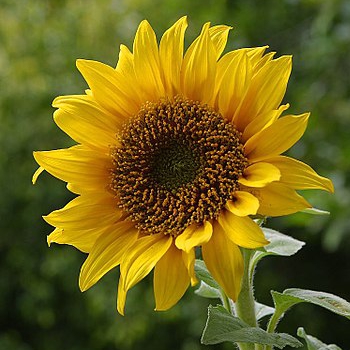INTRODUCTION

- Helianthus annuus is an annual flowering plant with a big daisy-like flower face.
- The terms helios ("sun") and anthos ("flower") are derived from the Greek words helios ("sun") and anthos ("flower").
- The blooms appear in a variety of hues (yellow, red, orange, maroon, and brown).
- the most frequent are brilliant yellow with brown cores that develop into heavy seed heads.
REQUIREMENTS
IRRIGATION
CULTIVATION
NUTRIENT DEFICIENCY
DISEASES

